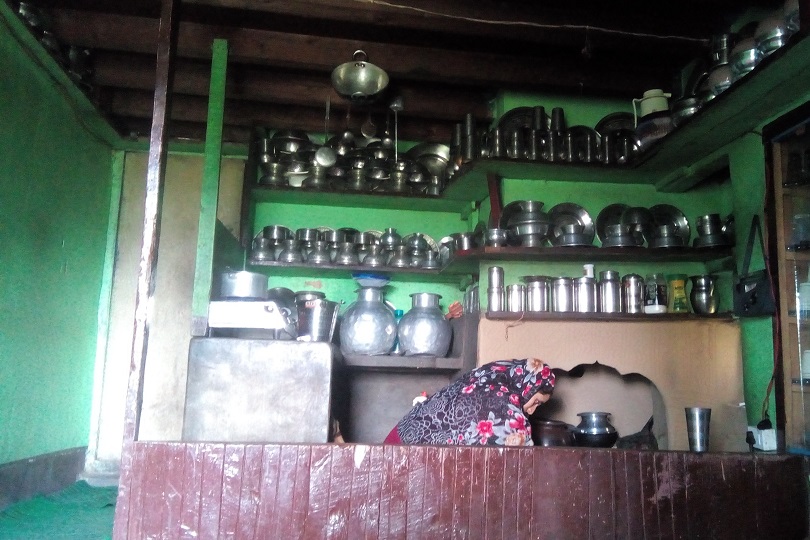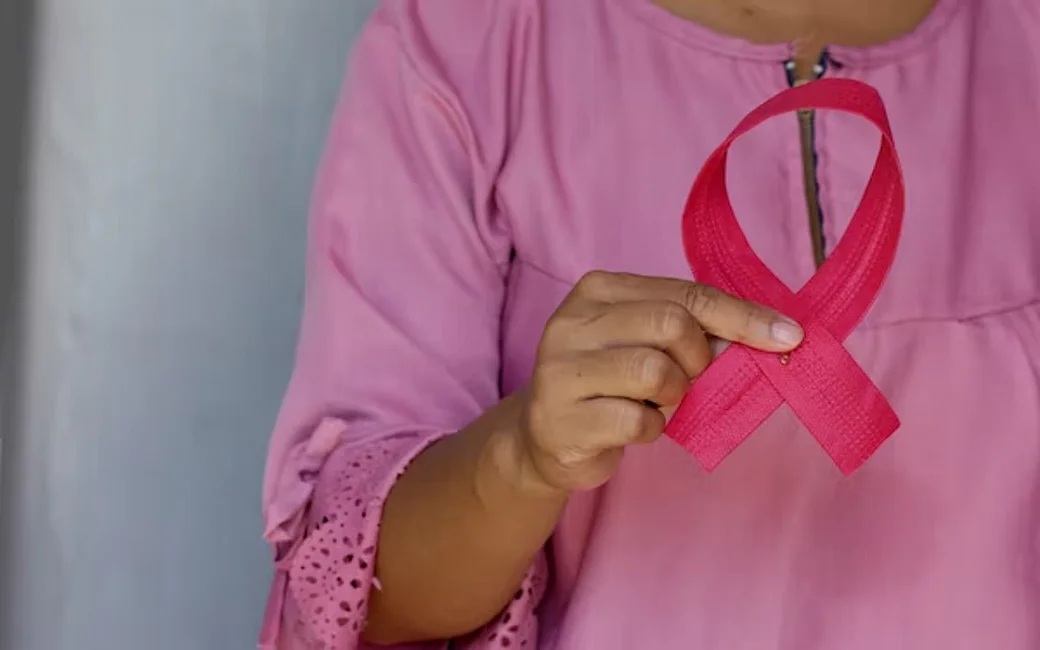
FAR away from the hustle and bustle of the city, a gravely path meandering through tiny hamlets on either side, snakes its way up and down the verdant hills of Kulgam. A 20 km drive from the main town and an hour-long arduous moorland climb later, one arrives at Chak Nagum, a remote tribal village. Although the place has road connectivity, no public transport is available. Scenes of children playing on the roadside, women gracefully balancing firewood on their heads and men tending to cattle capture the daily lifestyle of the community.
Inside a mud house, perched on the slope of a hill, Rozy, a 20-year-old Gujjar girl is kneading dough to prepare meals for her family. Her eyes are striking, shaped like almonds and lined with kohl that contrast sharply with her innocent face. They seem to speak of a longing for something, something beyond the confines of her present reality.
Rozy was married to her cousin, two years back when she was still a 10th class student. Fond of learning, she was “never given a choice between school and marriage,” she said. She always dreamed of completing her education and impart knowledge to the children in her tribal community, however, everything changed for Rozy when she turned 18 and her parents arranged for her marriage. The community tradition of early marriage loomed over her dreams like a shadow, casting a veil of despair and dimming the light of her aspirations. “I felt angry and hopeless, but I knew nothing was going to change their decision,” Rozy said. Ironically, her brother has completed his bachelor’s degree and is yet to marry.

“I don’t understand why they send us to school in the first place, when they know we have to drop out today or tomorrow,” she said with a tone of resignation.
In the same mold as Rozy, her three sister-in-laws were also married away at quite a young age. The elder two dropped out of school in 10th while the youngest one could continue her studies only up to 8th. “They are themselves less academically inclined,” Rozy’s father-in-law opined, as if trying to defend his decision. “Suli gadi maklew kaem, Zindagi pyath cha barose (I got done with the work as soon as possible, because life is unpredictable),” he said in broken Kashmiri.
Early marriage among the tribal community is a tradition which is very familiar in J&K’s Gujjar-Bakerwal tribe. Many girls from these communities of Kashmir still face this customary practice, robbing them of their education. A study titled “Tribal education in Jammu and Kashmir, A case study of Gujjars and Bakerwals,” establishes early marriage as one of the critical issues in the field of tribal education. Due to the strong tradition of early marriages among the nomads they do not educate their children that fall between the ages of 10-18. This reason is also adding to the percentage of school dropout among both the tribe which is highest as compared to other tribes, it states. According to another 2015 study by Tribal Research and Cultural foundation (TRCF), 89% of the community members marry their children when they are between 14-18 years of age.
“Although the trend has largely shifted from child marriage to marrying between 17 to 19 years of age, it continues to undermine tribal girls’ access to education. This is also done because of the mindset where girls are considered to be a liability and not a resource,” Dr Javaid Rahi, a tribal social reformer, and the author of the study said. “An unmarried girl or a boy is seen as a taboo in this community and it is commonly believed that as a girl ages, her chances of finding a suitable partner decrease. Additionally, as Gujjars continue to have modest weddings, it inadvertently leads to a norm of marrying at a younger age,” he added. Besides, he argued that if the girls belong to a second generation of learners, there are generally higher chances of them completing their education.
In Wanpoh area of south Kashmir, tents, made of tarpaulin, are erected haphazardly across a ground, transforming them into temporary dwellings for the Bakerwals. Jabeena (name changed), a 15-year-old Bakerwal girl, is part of one of the many nomadic families that migrate to Kashmir every year from the Rajouri region of Jammu. Jabeena is engaged to a boy from her community and is expected to get married soon.
“Poverty!” reasoned her mother. “I am 40 and I too got married when I was just 12 or 13. I am a grandmother now; this is the life that we live. This is what we do,” she said. “We are nomads and keep wandering from one place to another. No stability means no school. We are always worried for our daughters and getting them married is our priority,” she added.

Her mother wants to apply for the marriage assistance scheme – a government initiative designed to provide financial assistance and support to economically disadvantaged girls for their marriage expenses. But given that Jabeena has never been to school, she has no Date of Birth certificate, a crucial document required to avail the benefits of various government schemes. “In absence of proper address and no schooling, many of these nomad girls don’t have proper documents. This way they easily get away with their official ages,” Rahi said.
According to the census report of India, 2011 J&K figured among the ten states having a literacy rate less than the country average (58.96%) for Scheduled Tribe (ST) population. The literacy rate among tribal males is 60.6 while that of females is 39.70.
A 2021 paper that analysed school progression, enrolment, disparity, and dropout patterns and trends of tribal school going children of J&K from the year 2012-13 to 2018-19 found that the dropout rates of tribal children at various stages have steeply increased. The data suggested that in 2018-19 the dropout rate for girls at primary level was 11.56%, followed by 15.28% at upper primary level and at the secondary stage the dropout rate was 28.86%.
Sociologist Dr Farah Qayoom, who has researched on tribal communities of Kashmir, said, “The average age at marriage for tribal girls is much less than the minimum age specified by law. Some brilliant tribal girls who do well at school have to drop out because of this custom and they are never able to complete their education afterwards.”
“They bear children at much younger ages that impacts their psycho-social wellbeing. The final outcome is that their development gets compromised,” she added.
As per an analysis of the Sample Registration System (SRS) reports, underage marriage of girls is on rise in J&K. The proportion of women who were married before attaining 18 years of age in Jammu and Kashmir has increased by 0.9 percent from 2012 until 2020. In order to keep a check on underage marriages, the Jammu and Kashmir government has drafted an Act known as “Jammu and Kashmir Prohibition of Child Marriage Rules, 2023″ under The Prohibition of Child Marriage Act, 2006 (Centre Act 6 of 2007), for the prohibition of child marriages through which child marriage prohibition officers (CPMOs) will be appointed and people informing about the wedding of minors will be suitably awarded.
Editor’s Note
Jammu & Kashmir has recorded the second lowest percentage of underage marriages for women across India, according to the latest National Family Health Survey (NFHS) report.
The latest data—NFHS-5—which provides data by socio-economic and other background characteristics that remains useful for policy formulation and effective programme implementation, was released by Union Health Minister Mansukh Mandaviya.
Among the states and Union Territories, J&K and Ladakh have recorded a 6 percent (each) average of underage marriages for women while at the National level about twenty-five percent of women aged 18-29 are married before reaching the legal minimum age, the report said.
“About two-fifths of women marry before reaching the legal minimum age at marriage in West Bengal (42%), Bihar (40%), and Tripura (39%), and about one-third of women marry before reaching the legal minimum age at marriage in Jharkhand (35%) and Andhra Pradesh (33%).” it said.
The report further said that the percentage marrying before the legal minimum age in “Assam is 32 percent, 28 percent in Dadra & Nagar Haveli and Daman & Diu, 27 percent in Telangana, and 25 percent each in Madhya Pradesh and Rajasthan”.
The percentage of women marrying before reaching the legal minimum age of 18, it said, is lowest in Lakshadweep (4%); Jammu & Kashmir and Ladakh (6% each); Himachal Pradesh, Goa, and Nagaland (7% each), and Kerala and Puducherry (8% each).
Overall, 20-25 percent of men age 21-29 in Bihar (25 percent), Gujarat, Rajasthan, and Madhya Pradesh (24 per cent each), Jharkhand (22 per cent), Arunachal Pradesh (21 per cent), and West Bengal (20 percent) marry before the legal minimum age of 21 years.
The lowest proportions of men marrying below the legal age at marriage are in Lakshadweep and Chandigarh (less than 1 per cent), Kerala (1 percent), Puducherry, Tamil Nadu, and Nagaland (4 per cent each), Karnataka and Andaman and Nicobar Islands (5 per cent each), Himachal Pradesh and Goa (6 per cent each), and Delhi, Punjab, and Maharashtra (9 per cent each).
However, despite such a higher percentage in most of the parts of India, the report also said that the early marriage percentage has been declining over time.
“Marriage before the legal age of 18 is 23 percent for women aged 20-24, compared with 47 percent for women aged 45-49. Similarly, for men, marriage before the legal age of 21 years has dropped from 27 per cent for men aged 45-49 to 18 per cent for men aged 25-29.” The NFHS report revealed.
As per NFHS, the median age at first marriage for women aged 20-49 slightly increased from 19 years in 2015-16 to 19.2 years in 2019-21. For men aged 25-49, the median age at first marriage slightly increased between 2015-16 and 2019-21 (from 24.5 to 24.9 years).
The report further noted that women who have qualified 12 or more years of schooling marry much later when compared to other women. “The median age at first marriage for women aged 25-49 increases from 17.1 years for women with no schooling to 22.8 years for women with 12 or more years of schooling.” NFHS noted.
Follow this link to join our WhatsApp group: Join Now
Be Part of Quality Journalism |
Quality journalism takes a lot of time, money and hard work to produce and despite all the hardships we still do it. Our reporters and editors are working overtime in Kashmir and beyond to cover what you care about, break big stories, and expose injustices that can change lives. Today more people are reading Kashmir Observer than ever, but only a handful are paying while advertising revenues are falling fast. |
| ACT NOW |
| MONTHLY | Rs 100 | |
| YEARLY | Rs 1000 | |
| LIFETIME | Rs 10000 | |













